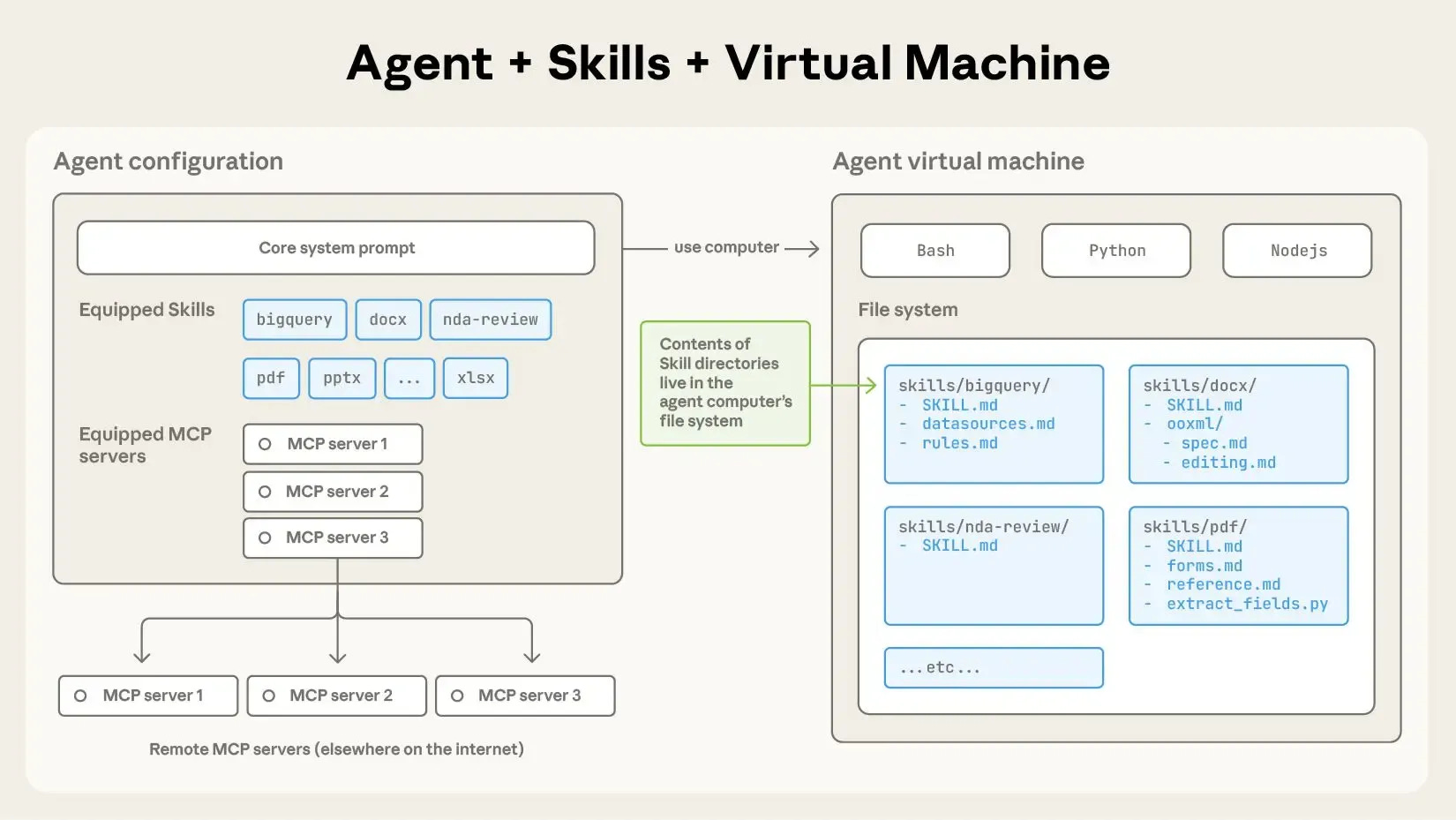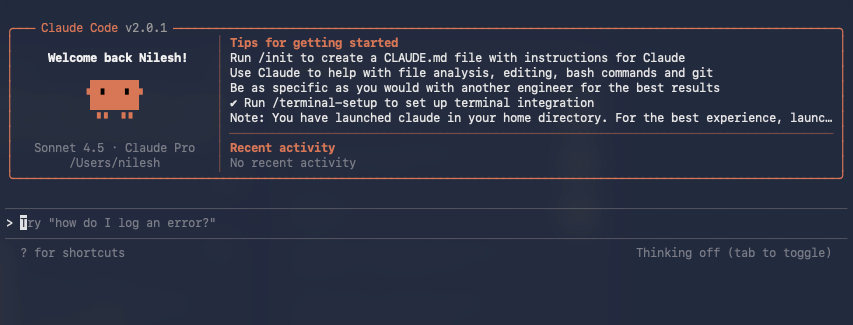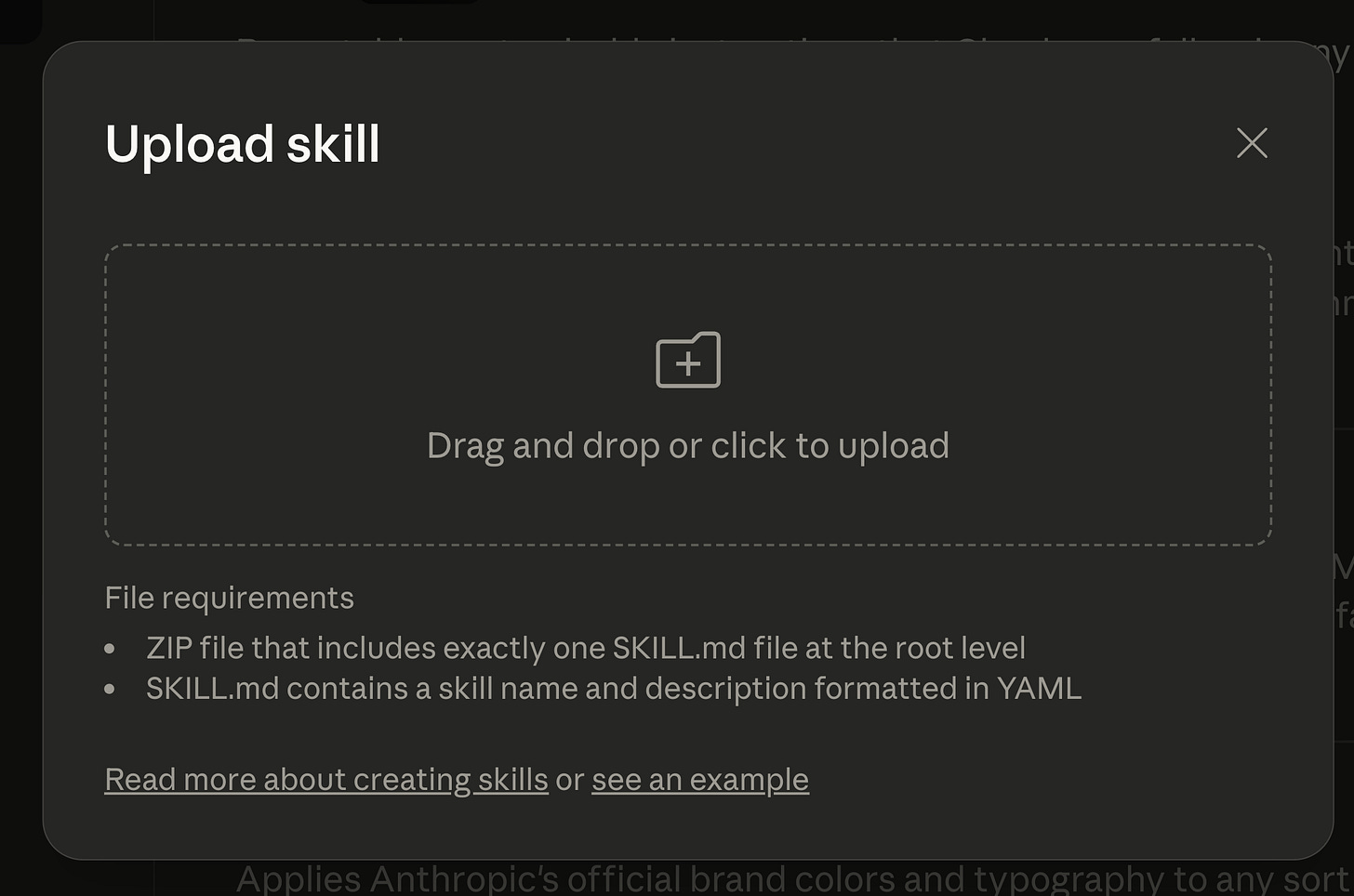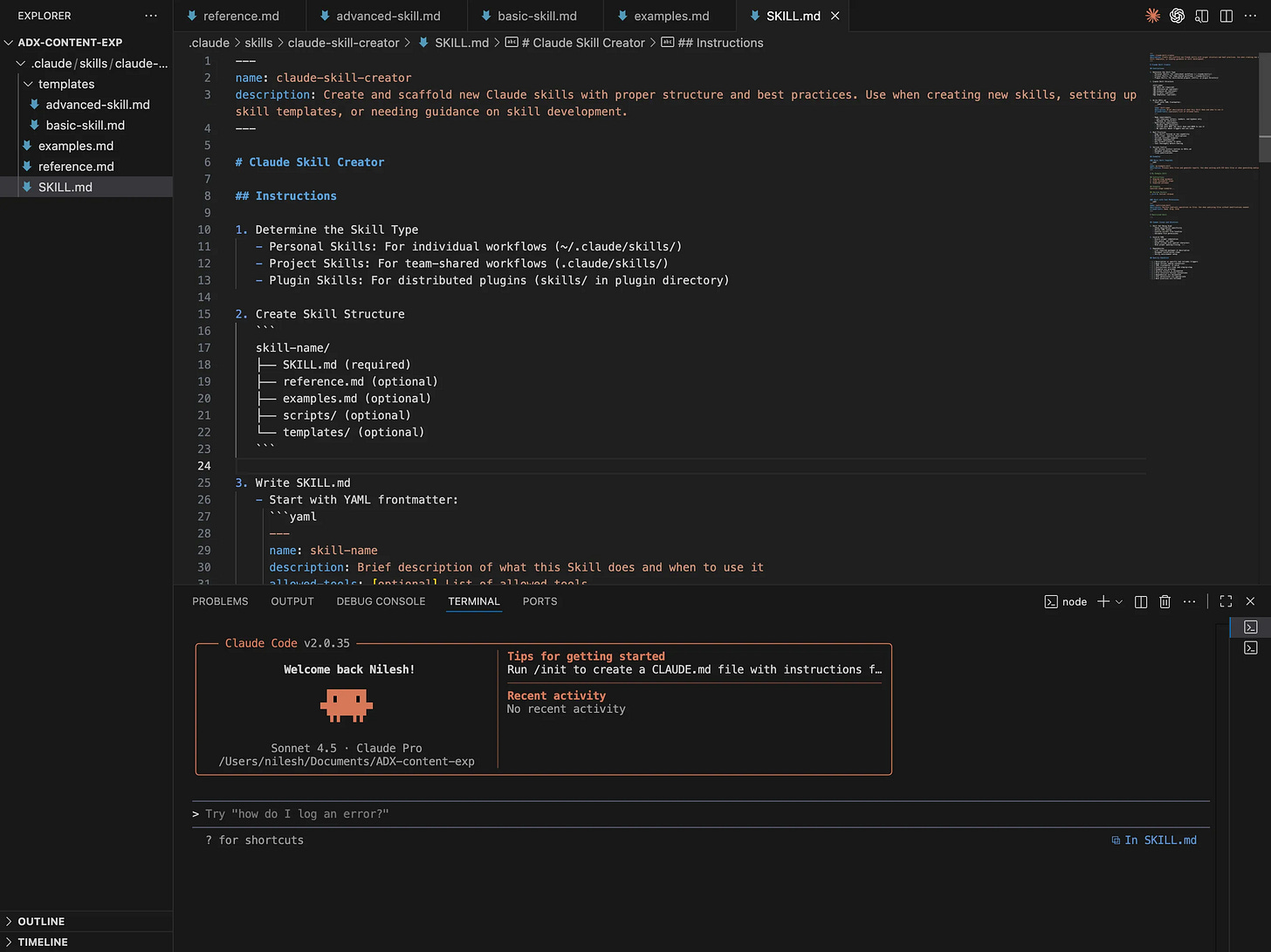A General Introduction To Claude Skills
A product leader's guide to reusable AI instructions.
Anthropic is really putting out some of the best tools for product people. Whether you code, write, analyze, plan campaigns, do content marketing, etc., Anthropic tools are one of the best in the market.
We are all familiar with their LLMs, Sonnet, Opus, and Haiku series. And Anthropic’s most popular agentic tool, Claude Code, which runs on top of these LLMs and allows product builders, managers, and engineers to manage their product workflow efficiently. Not only that, Claude Code has become a useful tool amongst researchers, data analysts, content marketing teams, DevRel teams, and many others.
Because Claude Code is a terminal-based tool, it is not surprising that many of the above use Windsurf, VS Code, or Cursor in their workflow. Meaning, coding tools are now becoming a general-purpose interface across the board. Many use it, and so should you, no matter the domain.
Let’s say that you want to write a product requirement document (PRD) for a running app, what tools will you use? Essentially, When writing a PRD, a product manager will start with defining a goal of the app and the user problems. Or a market gap.
Next, the PM will define the necessary features, and come up with user stories and flows. Here they will tools like Figma, Miro, or Whimsical. Once these things are cleared the team will then discuss along with engineers the tools and approach they will be using. These can be documented using Notion, Google Docs, Microsoft Word, Confluence, etc. And Jira or Linear for sprint planning.
The PRD will also includes LLMs, API needs, data models, edge cases, and constraints. Finally, the document is reviewed and iterated.
But now with code editing tools like Cursor and VS Code you can actually do all of that in a single tool. Plus, if you use Claude Code through their terminal you sort of get an extra super. Because of the new Claude Skills' agentic capabilities, Claude Code can become more personalized. You can tame Claude Code more specifically to your requirements.
You see, LLMs are very generic. Meaning, when you use an LLM with Cursor for a specific task, you will have to repeat your instructions over and over again. This can become tedious, and sometimes tools like Claude or ChatGPT will store frequently used instructions in their memory. This can sometimes hinder your productivity because the AI tool may incorporate outdated information from previous tasks into the current task.
In contrast, Claude Skills offers a more task-specific approach. Imagine you’ve spent 2 hours explaining to Claude how your company writes PRDs. Next week, you’ll do it again.
This is where Claude Skills changes everything. It sharpens Claude and Claude Code with specific instructions across all the conversations [and not only projects], narrowing its intelligence for a domain-specific task. Let’s explore more about what Claude Skill is and how it can eliminate the generality and be more task-specific.
What is Claude Skills?
Claude Skills is a reusable set of instructions that teaches Claude how to work. Not how someone else works. Not some generic “best practices.” How you work.
“Skills” is essentially a folder that contains multiple markdown files, of which SKILL.md is the primary file. This markdown file contains all the instructions. It also connects other files like examples.md, reference.md, etc.
.claude
└── skills
└── claude-skill-creator
├── examples.md
├── reference.md ├── SKILL.md
└── templates
├── advanced-skill.md
└── basic-skill.md
So, Anthropic released a new feature called Claude Skills on October 16, 2025, offering better alignment for task-specific workflows. This feature is extremely important for those who want to incorporate Claude Code more efficiently for repeated tasks like writing product documentation.
Unlike the general LLMs and AI assistants like Claude, ChatGPT, Gemini, etc., Claude Skills lets you hone Claude with exact processes, preferences, and references. Think brand guidelines, writing frameworks, and documentation structures.
Let’s say, for example, you are an AI research writer, and very frequently you like to write technical essays. Using Claude Skills you can write all the instructions in the SKILL.md file. These instructions can be structured in EEAT format, with Walter Isaacson writing tone, including an upfront conclusion at the beginning of each section, followed by a detailed explanation of the content itself.
Using Claude Skills, Claude or Claude Code now becomes your intern or assistant.
So, why need Skills? We already have memory, instructions, and file capabilities inside a project? Well, the distinction is worth noting.
Memory in a project is a conversation context. Meaning, if you are working on a research essay and the conversation limit is exhausted, you can continue the work in a new conversation because you have the instructions in your memory. Right? In other words, it is helpful for continuity. But you can’t use the instructions, memory, and file in the other project. They aren’t shareable.
Skills are infrastructure. They are the framework that defines how the work must be done. This applies regardless of the project you are working on.
Remember this analogy: Memory says, “We’re working on the Q4 roadmap.” Skills say, “Here’s exactly how we format all roadmaps at this company.”
Another example, memory says this is how to write an essay on “AGI is all we need.” Skills says, “This is how we write [all] the essay in this organisation.”
Skills are a persistent framework.

But how does Claude use Skills?
Claude uses Skills by automatically as well as dynamically loading instructions. This process is executed via a core design principle called progressive disclosure. This process works across all the Claude platforms — Web app, Claude Desktop, and Claude Code. Essentially, the same Skill files can be uploaded as a zip file and used to get similar responses in the Web app and the Claude Desktop.
Also, because Claude is an agentic tool, it automatically decides when to use them in the context of your prompt. Here is a general workflow:
Discovery:
Scanning available skills: When you start a conversation or give Claude a task, it quickly scans which skills you have available through your SKILL.md file. Essentially, it scans for specific instructions that adhere to the prompt you give.
Pre-loading metadata: Claude doesn’t read entire skill files at this stage—that would be wasteful. Instead, it reviews the metadata and structure of each skill to understand what they’re designed for. A skill titled “PRD_Writer” with opening context about product requirements immediately signals its purpose.
Triggering the skill: Based on your prompt and the available skills, Claude determines which ones are relevant. If you say, “Help me write a PRD for our new dashboard feature,” and you have a PRD skill, Claude recognizes the match and activates it.
Executing the Skill Workflow:
Progressive Disclosure: This is where the magic happens. Claude doesn’t load your entire 500-line skill document into the conversation at once. Instead, it loads instructions progressively—pulling in relevant sections as they’re needed for the specific task at hand. If your PRD skill includes sections on user stories, success metrics, and technical requirements, Claude might start with the structure and success metrics if that’s what your prompt emphasizes, then pull in technical requirements later if the conversation goes there.
Following Instructions and Using Tools: Once the relevant skill instructions are loaded, Claude operates according to those guidelines. If your skill says “always start PRDs with a one-sentence problem statement,” Claude does exactly that. If it specifies “use bullet points for user stories,” that formatting happens automatically. When your skill requires Claude to use specific tools—like creating a presentation file or searching documentation— it integrates those actions seamlessly into the workflow.
Now, if you aren’t aware, Claude Code also offers a CLAUDE.md file. And you shouldn’t confuse the purpose of both the markdown files. Here are some key differences.
When to Build a Skill vs. Just Prompt Better
Not every task needs a skill folder. Sometimes a well defined prompt will a great job. Our aim should always be to get the good response grounded in truth. Moreover, the model be creative and always explore news ways to present the truth. This is very important. We don’t the model to suffer context rot or context pollution in any manner. Because if that happens then model will be paralyzed and generate responses like a tired and over worked intern.
The key is knowing when to invest the time to create SKILL.md file versus prompting your way out. Here are some Do’s and Don’ts when it comes to building a skill file.
Build a skill when:
You’re repeating yourself. There are certain projects workflow that happens on weekly basis and some a have a deadline. These projects can have a requirement and might needs instruction frequently. For instance, “write PRDs in this format,” “use these success metrics,” “structure emails this way.” That’s your signal. Repetition means you’ve found a pattern worth automating. Another example will be writing a weekly newsletter around a certain topic.
Your team needs consistency. When multiple people need to produce the same type of output, then you must standardization the workflow. Five product managers writing PRDs in five different formats creates chaos. One shared PRD skill creates alignment. In other case, if an entire engineering team is writing a product doc.
You have specific processes or guidelines. Company writing style? Brand voice? Documentation standards? These aren’t suggestions; they’re requirements. Skills ensure Claude follows them every time, not just when you remember to mention them.
The quality bar is high and consistent. Workflow that include executive communications, customer-facing content, technical documentation, etc. Essentially, when the output quality matters and the format is predictable. In such cases skills eliminate variance.
Just prompt when:
It’s a one-off task. Exploring a new idea? Researching? Brainstorming? Answering a random question? A good prompt is faster than building infrastructure you’ll never use again.
The request is highly variable. If every task requires completely different instructions or context, a skill won’t help. Skills work best when there’s a repeatable structure underneath the variable content.
You’re still figuring out what you want. This is important. Don’t jump into building a skill until you know your process. Skill is flashy when you look into it but unless you figure out the workflow don’t start writing it. Experiment with prompts first, find what works, then automate it into a skill once the pattern is clear.
Speed matters more than consistency. Sometimes you just need a quick answer and formatting doesn’t matter. Don’t over-engineer it. Keep things simple.
Closing
Claude Skill is an essential infrastructure for anyone who has a repetitive and tedious workflow. A workflow that is important and is connected to the brand or an identity. Using skills you can make Anthropic tools more aligned to your specific needs. Before closing here are some additional information.
Before you go, here’s what this looks like in practice:
The first screenshot above shows a skill template structure in VS Code—clean, organized, version-controlled.
The second screenshot shows the Skills interface in Claude’s settings, where you can see multiple active skills ready to be deployed: algorithmic-art, artifacts-builder, brand-guidelines, internal-comms, canvas-design. Each one represents a workflow that can be used repeatedly.
If you’re someone who lives in their code editor then try combine Claude Code with Cursor or VS Code. These tools become more than just coding environments. Meaning, you have an ecosystem now. You can fetch details from internet, local machine, and what not. They become your command center for everything.
With this setup, markdown files become your universal format. You can:
Code new features with context-aware assistance.
Write technical documentation that follows your standards.
Analyze datasets with consistent methodologies.
Plan marketing campaigns using your frameworks.
Draft weekly changelog newsletters in your brand voice.
Generate customer-facing content that matches your tone.
All within the same workspace and for the same project. All following the same skills. All producing consistent, high-quality output.
That’s the real value of Skills: they turn tacit knowledge into explicit systems.








